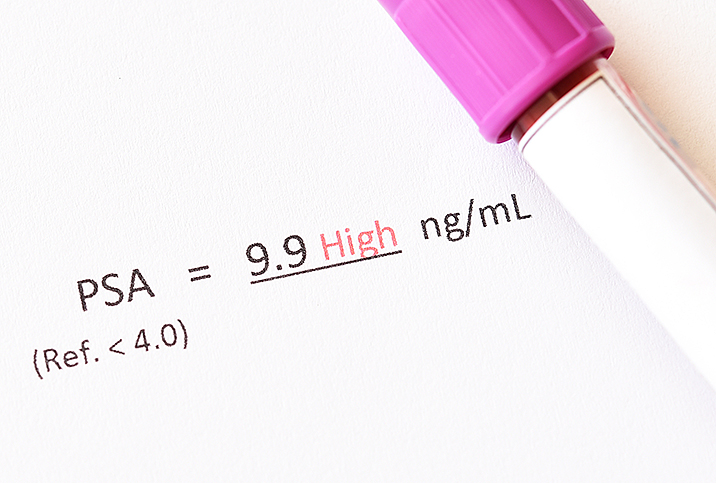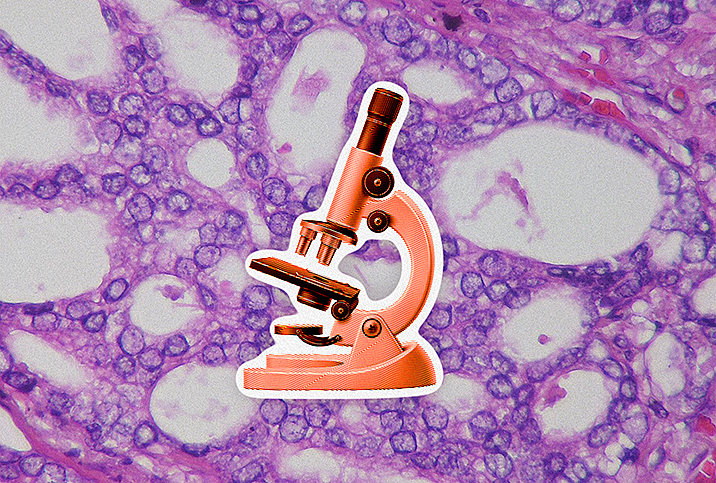Gleason Score. Aggressiveness. What Is My Doctor Talking About?

Whether you're adapting to a new job, hobby, product or musical instrument, there's a new lingo involved. Vocabularies are as specialized as the niche, market, career or area of study they exist to define.
The same applies to cancer. Someone newly diagnosed with any type of cancer may be overwhelmed by the jargon doctors, nurses and technicians use. Knowing that we want to help folks newly diagnosed with prostate cancer break down a couple of the terms they're going to hear: Gleason score and aggressiveness.
Diagnosed after a biopsy, which typically involves looking at tissue samples from the prostate under a microscope, prostate cancer is then given a Gleason score. It's a grading system used to determine prostate cancer's aggressiveness, or its tendency to grow and spread. Read on to find out what this all means as you start your journey toward prostate cancer treatment.
What is the Gleason system?
The Gleason system is named after Dr. Donald Gleason, who devised it in the 1960s. Gleason discovered that cancerous cells fall into five distinct patterns as they mutate from normal cells to cancerous cells. Pathologists using the system grade prostate cancer using numerals from 1 to 5. Grade 1 cells resemble normal prostate tissue, whereas cells closest to 5 are considered "high-grade" and have changed so much that they hardly look like normal cells.
A lower Gleason grade means that the cancer is slower growing and not aggressive. Because prostate tumors are typically made up of cancerous cells that have different grades, two grades are assigned for each prostate cancer patient. A primary grade is assigned to the cells that comprise the largest area of the tumor, while a secondary grade is assigned to the cells of the next largest area. For example, if the Gleason score is written as 3+4=7, it means most of the tumor is grade 3 and less of it is grade 4. Their sum is a Gleason score of 7. It may also be listed as Gleason 7/10, Gleason 7 (3+4), or a combined Gleason grade of 7.
A Gleason score of 6 is low-grade cancer, 7 is intermediate, and a score of 8 to 10 is high grade. It's critical to know whether any of the cells are rated as grade 5, even if only a small amount. Having any Gleason grade 5 in your biopsy puts you at a greater risk for recurrent cancer.
When assessing your chances of having advancing prostate cancer, your doctor will also consider the results of your digital rectal exam and your level of prostate-specific antigen (PSA), a protein produced by both cancerous and noncancerous cells in the prostate. Measured in nanograms per milliliter of blood (ng/ml), the PSA level may help detect cancer at an early stage. If prostate cancer is diagnosed in its early stages, it is easier to treat and more likely to be cured.
Other factors in predicting prostate cancer
In addition to the Gleason score, the following factors are also important in predicting the behavior of prostate cancer:
- PSA level in the blood
- Findings from a rectal exam
- Number of biopsy core samples to have cancer
- Findings on imaging tests
- Number of cores that contain cancer
- If cancer was found in one or both sides of the prostate
- If cancer has spread outside the prostate
Doctors will use all of this information when determining the best treatment for you.
While a higher Gleason score typically predicts that prostate cancer will be more aggressive, keep in mind that it alone does not predict your prognosis. When considering treatment options with your doctor, make sure you also know your PSA level and stage of the cancer. Understanding these will help you and your doctor decide whether active surveillance is best for you. Active surveillance means closely watching the cancer but not administering treatment unless there are changes that indicate it is getting worse.
Outlook for prostate cancer
Don't hesitate to ask your doctor if you have questions about your Gleason score or other test results. The more information you have, the more confident you will be when helping choose the treatment that is best for your situation. Remember that prostate cancer is highly treatable when detected early. The earlier the cancer is caught, the more likely it is for you to get successful treatment and remain cancer-free. And above all, stay positive: The prognosis for prostate cancer is one of the best of all cancers.


















